Narthaki

News

Info

Featured

 |
  |
Rani Karnaa - Dr. Sunil Kothari e-mail: sunilkothari1933@gmail.com Photos: Avinash Pasricha May 10, 2018 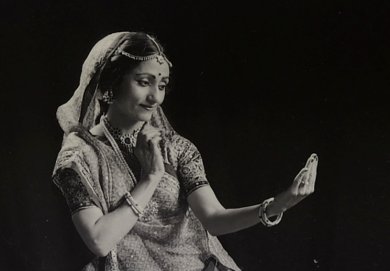 When I was working on my book on Kathak for Abhinav Publications for exponents section, I had to gather information about the contemporary dancers. Keeping track of dancers by attending their performances and writing reviews I was aware of leading dancers. Contemporary of Maya Rao, Uma Sharma, Urmila Nagar, Kumudini Lakhia, Rashmi Vajpeyi, Shovana Narayan, Durgalal, Geetanjali Lal and others, Rani Karnaa's was an important name. In post independence era, Delhi had become a major centre for Kathak dance. Gurus like Narayan Prasad, Sunder Prasad of Jaipur gharana were training young dancers who were shining stars of Kathak. In the world of dancers, I had come across only three dancers who hailed from a Sindhi community - Pushpa Makhijani of Kalakshetra (Pushpa Sunder after her marriage), male dancer Tirath Ajmani and Rani Karnaa. She was from Sindh, Hyderabad in Pakistan. Born in 1939, when she was 3 years old her parents moved to Delhi. From that young age Rani started learning Kathak.When she grew up, she came under tutelage of Japiur Gharana masters and studied under Narayan Prasad and Sunder Prasad. As a practice dancers studied more than one dance form. Rani also studied Manipuri under Guru Amumbi Singh and Bharatanatyam under Lalitha Shastri of Kalakshetra fame, but finally she concentrated on Kathak. When in Delhi, she saw Birju Maharaj's Kathak of Lucknow gharana. Much impressed by the nazaakat, delicacy and khubsoorati (beauty) of Lucknow gharana, she studied under Birju Maharaj who was at that time teaching at Sangeet Bharati institution at Mandi House. She attempted to integrate the aesthetic components of Jaipur and Lucknow gharana. Being fond of literature, Rani used ashtachhap sakha Surdas's and Guru Rabindranath's lyrics for composing dance numbers with Hindustani music. She also worked in close collaboration with Dr. S.K. Saxena, Professor of Philosophy in Delhi University. During a Kathak seminar in 1977, discussion was held on order of dance numbers to be presented in Kathak. Rani and Dr. Saxena had suggested having Vandana in the beginning followed by thaat, upaj, aamad and other pure dance numbers. Others had also given suggestions on how to present Kathak on contemporary stage. Rani Karnaa and I used to meet whenever I visited Delhi. It was always interesting to exchange views on Kathak. Since in Kathak a dancer selects one particular tala and dances several items in that tala, reciting bols, mnemonic syllables I used to find that the form was getting fractured and coming again and again to mike to recite padhant, the uniformity was lost. She would argue that it is not so, the subtleties of Kathak and intricacies of tala are displayed selecting one tala and performing tode, tukde, amad, parans etc. She would often get up and demonstrate to explain these aspects. 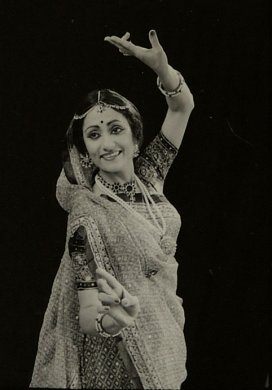
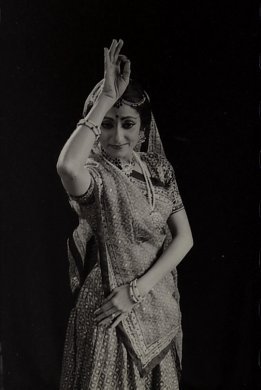
During my tenure as Professor in dance department of Rabindra Bharati University at Kolkata, we once again picked up from where we had left in 1980. After her marriage, she had moved to Bhubaneswar and later on to Kolkata where she was the first director of dance department of Calcutta School of Music, where she worked from 1978 till 1993. She also started Samskritiki Shreyaskar in 1995 at Jodhpur Park near her residence, training students besides giving regular solo performances and choreographing group numbers. For her aesthetic presentations of solo Kathak she was much respected. Her dignified appearance coupled with humility and sound knowledge of Kathak endeared her to Kolkata audiences. Of her various compositions and choreographic works in Kathak, I fondly remember Navarasamalika, Viraha Milan Raas, Ananda Dhara, Pujarini, Satrang, Navarang, Surya and Indradhanush. Other noteworthy numbers were Nritya Sandhya and Ananta Yatra. Her husband Mr. Nayak was an income tax commissioner. He being an Odiya, Rani during her stay in Bhubaneswar had come in contact with Kum Kum Mohanty through whom she met Guru Kelucharan Mohapatra and studied Odissi. She used to give Odissi performances, but Kathak was her first choice. Among her young students, Vikram Iyengar studied Kathak. He extended the boundaries of Kathak working in contemporary dance genre. His experiments were approved by Rani as she found that his work was based on a sound foundation of Kathak. Vikram established a group of dancers and theatre workers named Ranan, where he explored Kathak in various ways and also produced and directed plays. Among other disciples of Rani, Sohini Debnath and others followed Kathak as evolved by Rani. There is certain poise, ‘shukun' element of quietness and amply rich in technique. Aesthetic as a hallmark is never lost sight of. 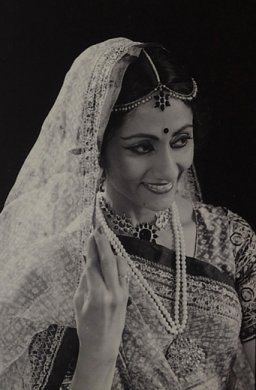
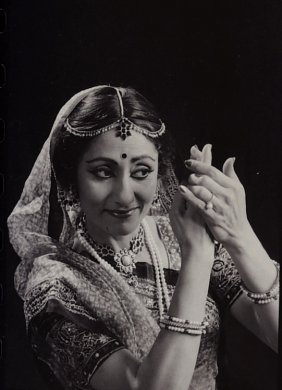
On Sundays Mr. Nayak, Rani and I used to spend time at Tollygunj Club and our discussions invariably veered towards Kathak and also new developments in dance. Shyamanand Jalan at Padatik used to arrange workshops of Kathak, Odissi, Kuchipudi, also international conferences including dance, theatre, martial arts, and practically the dance world of Kolkata was kept agog. Several honours and awards were conferred upon her. The prestigious Sangeet Natak Akademi Award was given for her outstanding contribution to Kathak in 1996. One she cherished was from Akhil Bharatiya Sindhi Boli and Sahitya Sabha given in 1998. Civil honour Padma Shri was given in 2014. Awards from abroad included Queen's Award from Laos, and Vidya Varidhi from Bharatiya Kala Kendra, Delhi. During her long career, she was often sent by Government of India and Indian Council for Cultural Relations to Russia, UK and European countries. Her performances received critical appreciations wherever she performed. In 2013, Rani gave her last performance at age of 74 in Kolkata. A voracious reader and a thinker, she took part in Kathak Prasangs held in Bhopal and presented papers on salient features of Jaipur gharana. With advancing age she concentrated on teaching Kathak to a select group of dancers. Her approach to Kathak was distinct. As a strict disciplinarian she emphasized on higher values in dance. Her legacy will be carried on by her devoted group of dancers led by Vikram Iyengar and Sohini Debnath. There are recordings of her dance in Sangeet Natak Akademi and also few interviews. Rani is survived by her daughter-in-law and a granddaughter. Rani will be much missed.  Dr. Sunil Kothari is a dance historian, scholar, author and critic, Padma Shri awardee and fellow, Sangeet Natak Akademi. Dance Critics' Association, New York, has honoured him with Lifetime Achievement award. Comments * Very sorry to hear the sad news of Rani Karnaa's demise. She was one of the best Kathak naatya exponents. We had the privilege of working together in 1970s. We were the first ones to bring five naatya styles on one stage called 'Aikya Bharatam' with Kathak by Rani Karnaa, Kathakali by Dhananjayan, Bharatanatyam by Shanta Dhananjayan, Kuchipudi by Vasanthalakshmi & Narasimhachari, and Odissi by Ramani Ranjan Jena. After presenting it in Madras DD, we took it to stages in Chennai and Ooty. Working together was an enjoyable experience and we found Rani-ji a down to earth person without any ego or complex whatsoever. We remember her good nature and friendly approach. Our heartfelt condolences to her near and dear ones. We pray for her soul to rest in peace. - The Dhananjayans (May 13, 2018) Post your comments Please provide your name and email id along with your comment. All appropriate comments posted with name and email id in the blog will also be featured in the site. |